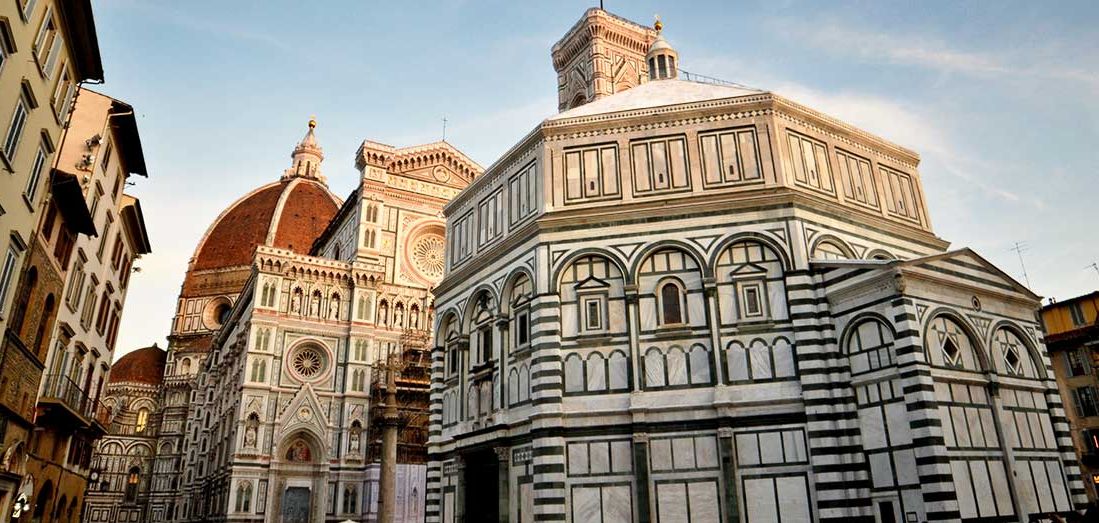
The San Giovanni Baptistery: its origins and secrets
Go beyond the beauty of one of Florence’s most prized symbols to discover what’s hidden behind its walls.
The San Giovanni Baptistery is one of Florence’s oldest and most historic structures; by no coincidence it takes its name from the city’s Patron Saint.
Built on the remains of an ancient Roman domus, its iconic octagonal shape enchants every visitor, not to mention the spectacular white and green marble covering the exterior, its beautiful gold doors and the interior’s sparkling mosaics.
Outside the San Giovanni Baptistery you can admire the famous golden tiles of the Porta del Paradiso made by Lorenzo Ghiberti while, inside it, you can see the marvelous golden mosaic which inspired Dante Alighieri for the Divina Commedia.
But the "bel San Giovanni" (to use Dante’s words from the Divine Comedy) is also keeper of a few secrets ... history’s pages contain myths and legends that endure throughout centuries – and the baptistery walls have more than one to tell.
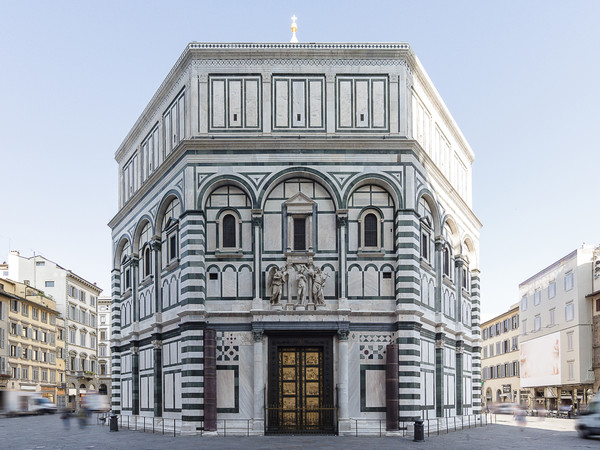
The "naval battle"
The building’s bottom section on the via Roma side (southern side), features a rather curious bas-relief. Look closely and you’ll see a naval battle ... but why?
This section of the Baptistery is believed to be part of an ancient Roman sarcophagus, an artifact incorporated into the wall to commemorate Florence’s Roman origins.
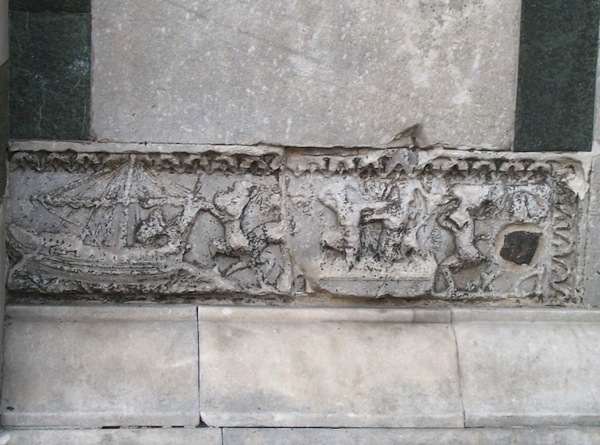
Liutprando’s foot
On the Baptistery side facing via dei Calzaiuoli, you’ll find a footprint about half a meter from the ground on the entrance’s right-hand column: legend says that the footprint belongs Liutprando, King of the Longobards in the 7th century.
Liutprando wanted to ensure (once and for all) a standard for all commercial transactions and thus invented a unit of measurement. And what better reference point than... his foot?
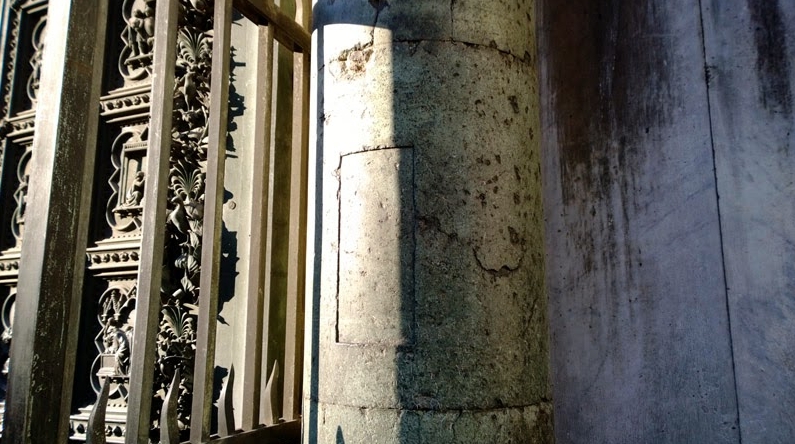
Photo credits: https://www.conoscifirenze.it/curiosita/284-Piede-di-Liutprando.html
The "Pisan" columns
Bordering the Baptistery’s main doors you’ll see two curious porphyry columns. These structures were gifted to the city of Florence from Pisa as a sign of gratitude for the aid received during the battle against Lucca in 1117.
Myths surrounding the gift say that the two columns once shone splendidly; however, to spite their bitter Florentine enemies, the Pisans blackened them with fire before presenting them to the city.
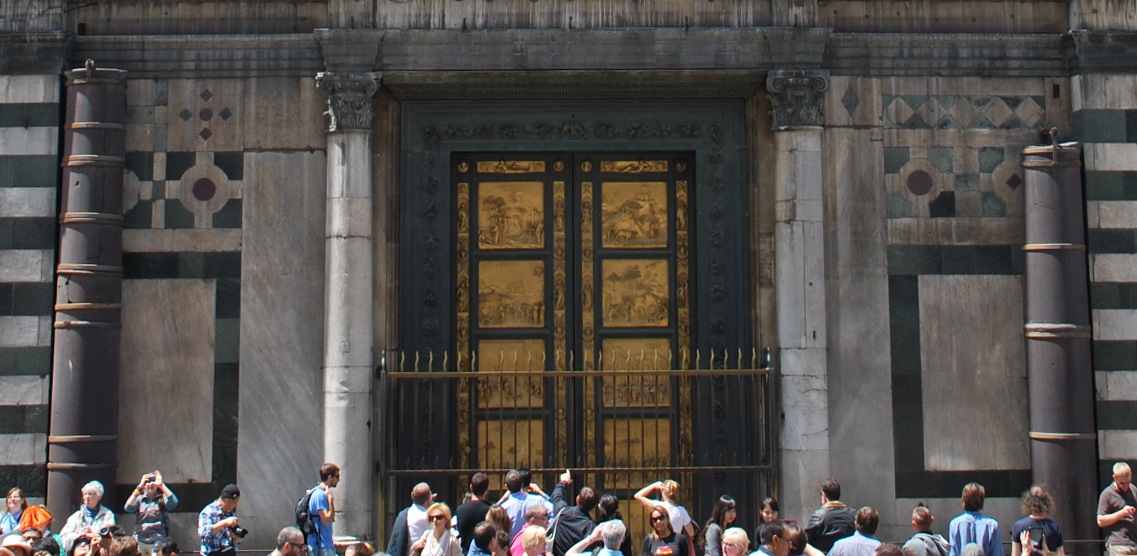
Photo credits:
Battistero San Giovanni: https://www.aftours.it/battistero-di-san-giovanni/
Mistero della battaglia navale: https://www.firenzepost.it/2013/08/17/battistero-di-firenze-il-mistero-della-battaglia-navale/
Colonne "pisane": https://duomo.firenze.it/it/opera-magazine/post/4493/il-battistero-e-le-colonne-traditrici






 All the services are provided by local merchants
All the services are provided by local merchants By using this site you support Florence
By using this site you support Florence We offer products with high-quality standards
We offer products with high-quality standards You stay sustainable
You stay sustainable It's a 100% trustworthy website
It's a 100% trustworthy website